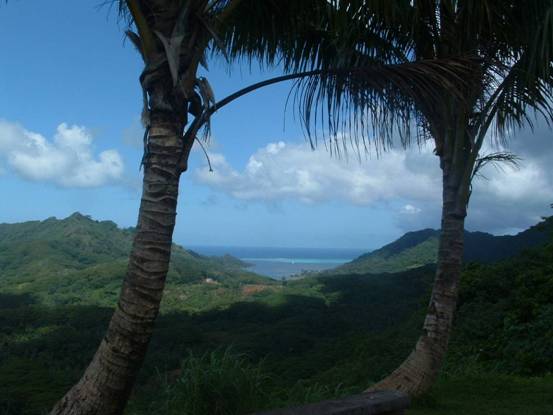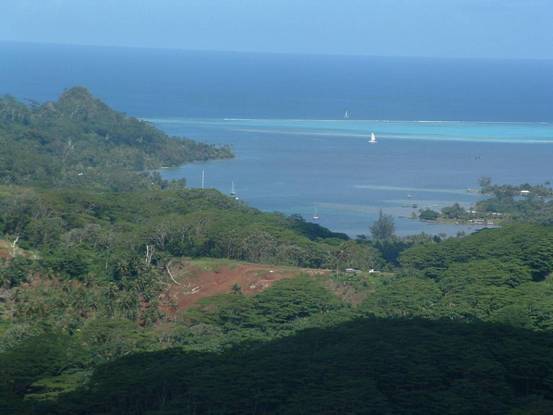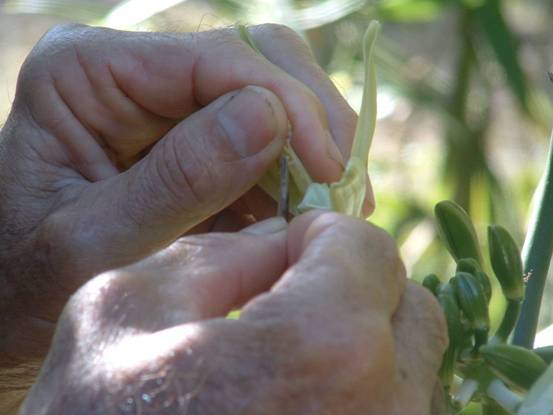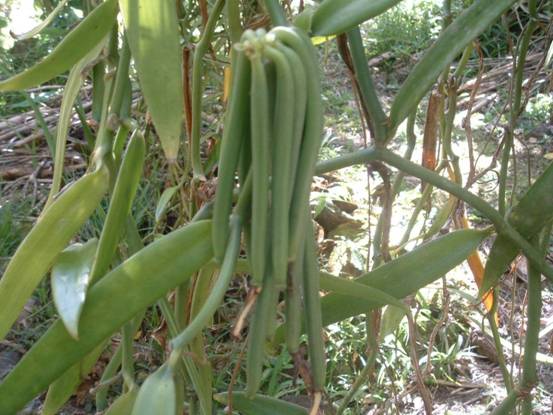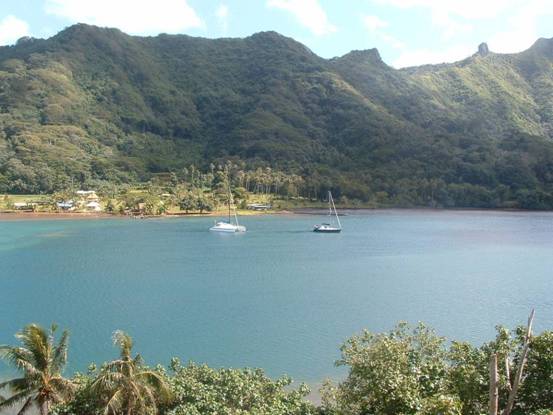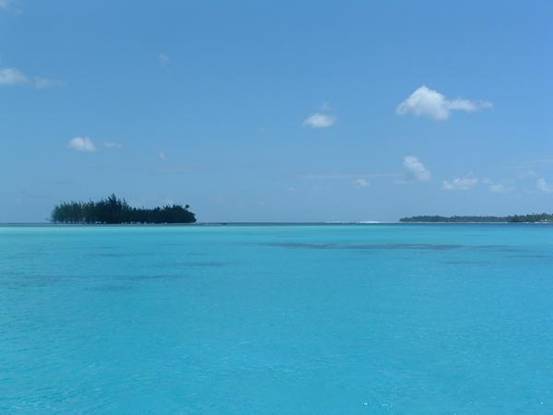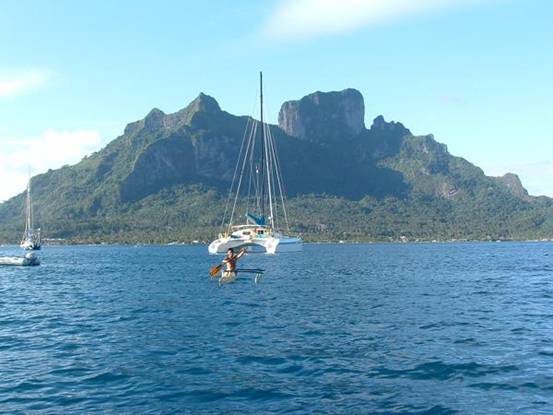THE SOCIETY ISLANDS - PART 2

|
The 16:30.7S 151:46.3W Tahaa After a few days
relaxing at the very laid-back Taravana Yacht Club, we hired a buggy for a ride
around the island. It wasn’t going to take too long as it is only about 18 miles
in circumference. However there are one or two tracks inland to make it
interesting. It actually took us 4 hours for the whole trip so we must have
found some things of interest! We took a muddy dirt track (which meant that we
got muddy too, as there’s not much protection in a buggy) up to the middle of
the island for a stupendous view over the whole of Tahaa and over to
On top of Tahaa, with
buggy
So
cool
Views around
Tahaa
A couple of days later we motored round to Baie Horepiti, where we had arranged a botanical tour of the island with a charming Frenchman, Alan Plantier (good name for a botanist) who sailed here 20 years ago and never left. He has built a wonderful house in the traditional style on the water-side and planted a fantastic garden with all the local trees and shrubs. The first half of the tour was in his garden, which included a small vanilla plantation for which Tahaa is famous. Vanilla
originates from After a tour of the garden and an explanation of what plant materials are used for building the traditional houses it was off to the hills again, on an even muddier track, this time, thank goodness, in a Land Rover. More explanations about the flora and fauna of the island, especially those plants and animals that the first human inhabitants brought with them on their migration east from China, and particularly Taiwan some 3000 years ago. The Polynesians
are big people, with a heavy bone structure and apparently this is primarily due
to their diet, particularly their staple, taro root which has a very high
calcium content. The first settlers brought taro with them from
Vanilla flower and
vine
Extracting the
pollen
Fertilising the
flower
The growing vanilla
pods
The weather
forecasts were warning of a period of very strong winds. We had a 490 mile trip
to Aitutaki in the This really is an extraordinary-looking island, with its huge, fortress-like central island surrounded by a lagoon of the most wonderful aquamarine beauty. The island is given over entirely to tourism with numerous expensive, lagoon-side hotels. Unfortunately the recession and the escalating cost to getting here meant that most we at best half-empty, or closed completely. We anchored in
the lagoon and had a wonderfully calm, peaceful night. Next day we headed for
the famous ‘Bloody Mary’s’ restaurant and took one of their moorings for the
night. The snorkelling at certain points in the lagoon was meant to be
excellent, but, as we have found so often in the Pacific, actually not that
great and certainly not comparable with the best sites in the That evening we
met up with friends, John and Chris, on their boat Sara 2, from Keyhaven, and
ate at ‘Bloody Mary’s. The restaurant has been an institution in
The lagoon,
The central island,
Next day we beat the 25 miles back to Tahaa. We had decided that if we were to ride out a few days of rough weather then Taravana was the best place to do so. We called Richard on the VHF and he kept us a buoy tucked nicely into the shore. And it did blow! For three days the wind howled and the rain lashed down. Pretty miserable, but ideal for staying inside and reading trashy novels. The wind here
has now stopped, but the weather towards the We have not
stopped anywhere for as long since we set off from |



